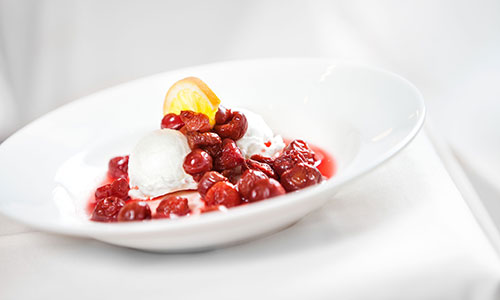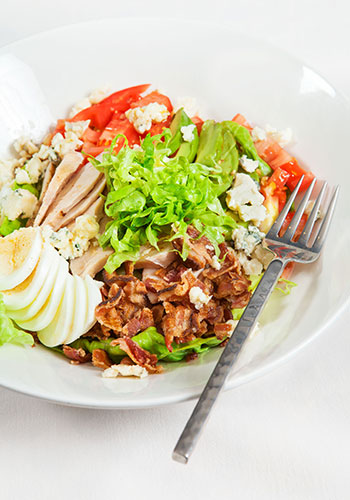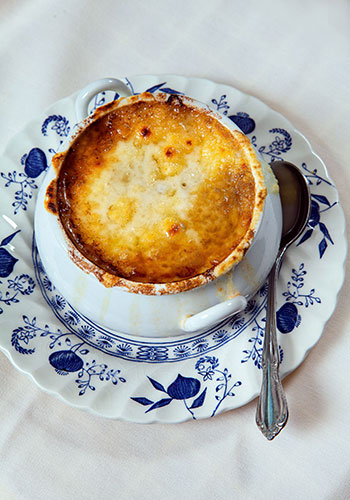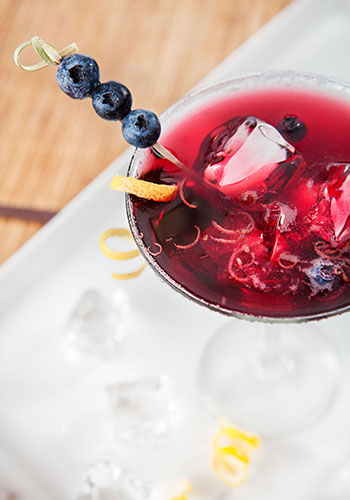A look at a half-century of cooking for NAIT's 50th anniversary
When the first students enrolled in NAIT’s culinary program in 1963, they embarked on “cook’s training” and served food in the aptly, if unremarkably, named Dining Hall. Today, students study culinary arts on the path to becoming chefs – or food writers, stylists, photographers, even researchers.
Former program chair Stanley Townsend describes the modern chef as a culinary artist producing an “evolving art.” The shift from cook to chef to artist speaks to the growth of the program, but also to the changing way we look at food: no longer is it just sustenance on a plate.
In recognition of five decades of culinary training at NAIT, we asked the faculty to identify some of the most dramatic food trends of the past half-century. While some have proven to be a flash in the pan, others have laid the groundwork for the way we eat today.
The 1960s
The 1960s doesn’t often get a lot of respect on the culinary timescale. It was a conflicted period in the kitchen. While technology was bringing more processed, convenience foods to market, it was also, through mass media, making it easier for home cooks to learn traditional techniques.
It was the decade that saw the sale of the first countertop microwave and the creation of Cool Whip, the “non-dairy” spread (developed by a chemist, not a chef). But in the same decade, Julia Child and company published Mastering the Art of French Cooking. Soon after, Child’s TV show aired, and people could watch her spend an afternoon preparing beef bourguignon or roast chicken with port wine.
For the first time, home cooks were encouraged on a mass scale to produce classic, restaurant-worthy food in their own kitchens.
 The 1970s
The 1970s
By the ’70s, chefs and home cooks alike recognized that food was an opportunity for theatre. While cooking may once have been done in small, closed-off kitchens, roasts carved tableside and elaborate productions involving brandy and flame brought technique into the dining room.
“It was the start of the open kitchen that you see more often in restaurants today,” says Teja Atkinson, a chef and former instructor’s assistant with the Culinary Arts program.
“Food was made right before your eyes, and it was a way to put on the best show, to get the aromas, and even for chefs to one-up each other.”
While few home cooks today are regularly setting fire to the dessert, the original concept has taken hold in the open-concept kitchen, which literally brings food to the centre of the home.
The 1980s
If you had to distil 1980s style into one word, you might use big – or, more accurately, tall: tall hair, tall shoulder pads and equally stylized cuisine, which often placed structure and presentation ahead of flavour.
Elaborate presentation was a must, and a truly spectacular dish might resemble a Jenga tower on a plate.
By the latter half of the decade, flavour was beginning to catch up to presentation in importance.
California cooking, or Tex-Mex, marked a continuing march away from classical preparations to a more contemporary approach in the kitchen.
“People started veering away from the old masters, and started to invent lighter fare, much stronger in presentation and bolder in flavours,” says Townsend.
“They were still using the classical methodologies, but they were using non-traditional ingredients.”
The world is your oyster
By the 1990s, globalization and the Internet helped contribute to a shrinking world.
It became increasingly easy to travel and experience international cuisines, as well as ship and import foods.
People began to experiment: fusion was big, and Canadian chef Susur Lee (NAIT’s third Hokanson Chef in Residence) earned international recognition for his interpretation of Asian and French fusion, or “Nouvelle Chinoise.”
Meanwhile, growing health consciousness was pushing butter- and cream-laden classics further to the back burner. Lean meals, like those using increasingly accessible seafood, became de rigeur.
(Interestingly, in the 1996 book Culinary Artistry, 32 celebrity chefs were asked which 10 ingredients they would take with them to a desert island. Only three listed butter; half listed olive oil.)
 Back to basics
Back to basics
Farm to fork. Nose to tail. Slow food. Is it a coincidence that modern food trends can be condensed to such simple phrases?
Elevated cooking today is remarkable for what it isn’t: complicated, over-seasoned, elaborate. It’s taken a few years, but today a bottle of locally produced cold-pressed canola oil can respectfully take its place on the counter alongside the imported Greek olive oil.
In 2005, NAIT’s newly renovated Hokanson Centre for Culinary Arts began training students on some of the highest-tech equipment available in the food realm, though it’s used to produce some very old-school concepts. “Right now, we’re focusing on seasonal ingredients and nose-to-tail books, so more utilization of what may not be considered prime cuts of meat,” explains Atkinson.
The future
What’s next for food? Atkinson and Townsend believe many trends that exist today will continue.
Townsend also predicts that people will become more health conscious and move away from big portions. They’ll become more concerned with sustainable products and cleaner flavours that highlight the ingredient. People will eat seasonally and locally more often, and make more sustainable choices.
If he’s right, it’s quite possible that what we eat for dinner 50 years from now will bear more resemblance to food from the 1860s than from the 1960s – though with a lot less butter.
The NAITini
 NAIT Food Services has turned one of the quintessential before-dinner drinks into a commemorative cocktail to celebrate the institute’s golden anniversary. Whether you prefer your martini shaken or stirred, this one is perfect for your next dinner party, or better yet – class reunion.
NAIT Food Services has turned one of the quintessential before-dinner drinks into a commemorative cocktail to celebrate the institute’s golden anniversary. Whether you prefer your martini shaken or stirred, this one is perfect for your next dinner party, or better yet – class reunion.
- 15 ml (½ oz) blueberry juice
- 45 ml (1½ oz) vodka
- 15 ml (½ oz) triple sec
- 15 ml (½ oz) lime juice
Pour the ingredients into a cocktail shaker filled with ice cubes. Shake for 30 seconds. Strain into a chilled cocktail glass. Garnish with floating blueberries or a lime wedge.